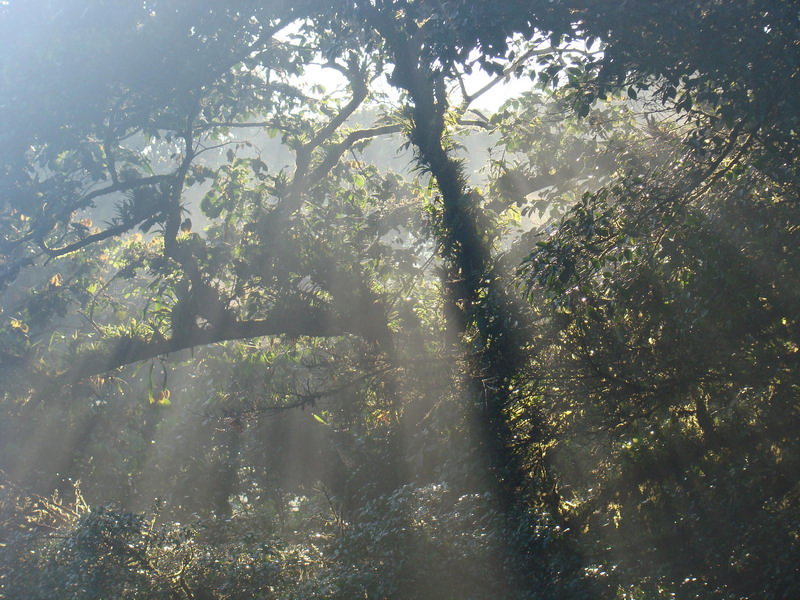
Climate crisis: what you can do. Part 2: Donate to a wildlife reserve
The constant question in the news about the climate crisis is "What can I do?". One option is to donate to a nature reserve.
In the first part of these articles on what to do to help mitigate the climate crisis we explain some simple and efficient actions. In this article we will mention some good options for those who want to take an extra step by donating to an NGO that protects a nature reserve. Reserves help maintain the balance of ecosystems, capture carbon from the atmosphere and care for the planet's biodiversity.
Donating to an NGO is a way to help change policies and economic models related to climate change and to help conserve the planet's nature reserves. Three good options are: donate to a nature reserve, donate to an NGO that does activism, or become a volunteer. These are just a few ideas, there are thousands more.
One advantage of donating to a reserve in Latin America, for those in the United States or Europe, is that the exchange rate difference can greatly enhance the impact of the donation. It is possible, for example, that the cost of protecting one hectare of forest in North America is equivalent to protecting five in Latin America.
Pumakama nature reserve. Pumakama means "he who guards the puma with stealth." It is a natural reserve in Córdoba, Argentina, where they have been working for twenty years to recover the fauna and flora of the area. They also rescue wild animals with very diverse histories.
Los Tananeos Natural Reserve. This reserve in the department of Cesar, has 140 hectares of one of the most endangered ecosystems that could better adapt to climate change because they are very resilient to drought and torrential rains, the tropical dry forest.
La Palmita Research Center. La Palmita is an agricultural reserve and research center in Trinidad, Casanare. In addition to protecting a nature reserve, they research the biological wealth of the region, rescue wildlife that has been illegally trafficked, and conduct research and training on agricultural innovations that meet both the economic and food needs of urban and rural areas and respect the sustainability of nature.
Natura Foundation. Founded in 1984, Fundación Natura is one of the oldest environmental organizations in Colombia. They have five forest reserves in different areas of the country, do research on conservation and biodiversity, contribute to the recovery of ecosystems and species, and provide advice on sustainable forest management. Adopting a hectare of one of their reserves costs less than 17 dollars.
Bioparque La Reserva. Inaugurated 11 years ago, the Bioparque La Reserva is located a few kilometers from Bogotá and promotes the conservation of Colombia's biodiversity. In addition to the restoration of its Andean forest reserve, it has ex situ conservation projects for mountain coati, harpy eagles and yellow-footed parrots and a research and conservation center for birds of prey. Planting a tree costs the equivalent of $6.
RELATED CONTENT

Association of Volunteers for the Service of Protected Areas. Costa Rica is a global leader in action against climate change and the protection of its ecosystems. So much so that in September last year the United Nations awarded it the top prize for its policies to decarbonize their economy. The Association of Volunteers for the Service of Protected Areas is an NGO that serves as a bridge between civil society and the country's protected areas, so that more people join in their protection. They have about 2,300 volunteers and also receive donations. One of their donation modalities is the "adoption" of a sea turtle for the cost of 10 dollars.
Children's Eternal Rainforest (BEN). The Children's Eternal Rainforest is the largest private reserve in Costa Rica, founded in the late 80s thanks to the efforts of a group of Swedish students (yes, like Greta Thunberg) and sustained by the efforts of schools, individuals and organizations in 44 countries. It covers 23,000 hectares and, although this corresponds to 0.0048% of the earth's surface, is home to 2% of the orchids, 3% of the butterflies and 5% of the birds on the planet. They receive donations starting at $10, which is tax deductible in the United States.
Mangaloma Natural Reserve. They have 200 hectares of reserve out of the 700 that constitute what is left of the forest area Cantón Pedro Vicente Maldonado, in the region of the Ecuadorian Chocó Andino. With a great biodiversity, the reserve is home to more than 290 native bird species. In addition to ecological services and scientific research, the reserve offers bird-watching and ecological education services.
The Wildlife Trusts. The Wildlife Trusts is a century-old NGO in the United Kingdom, bringing together 46 trusts, which agglomerate 2,300 across the UK, equivalent to 98,500 hectares of land. In addition to the land they protect and the species of flora and fauna that benefit from it, they advise on the sustainable use of land, protection of the maritime territory and sustainable development of it.
National Parks Conservation Association. The National Parks Conservation Association is a 100-year-old organization with 1.4 million members nationwide. Its huge team ranges from lobbyists lawyers to ecologists to volunteers and they work in every national park in the country. Here are their accomplishments over the past hundred years.
Foundation for National Parks & Wildlife. The Foundation for National Parks & Wildlife is directly associated with Australia's National Parks. Throughout its history it has raised over AUD 60 million to conserve and expand 48 national parks and protected areas in Australia. Now, in light of the alarming crisis, they are raising funds.











LEAVE A COMMENT: